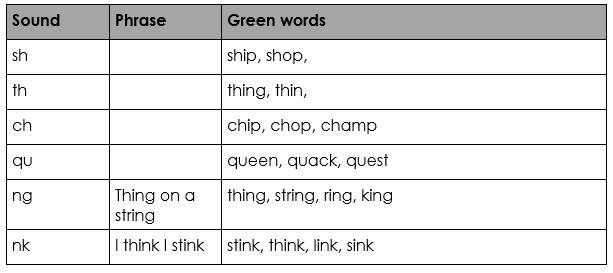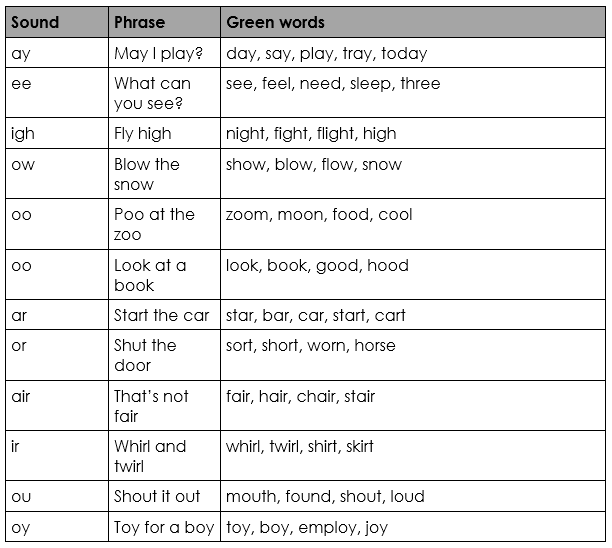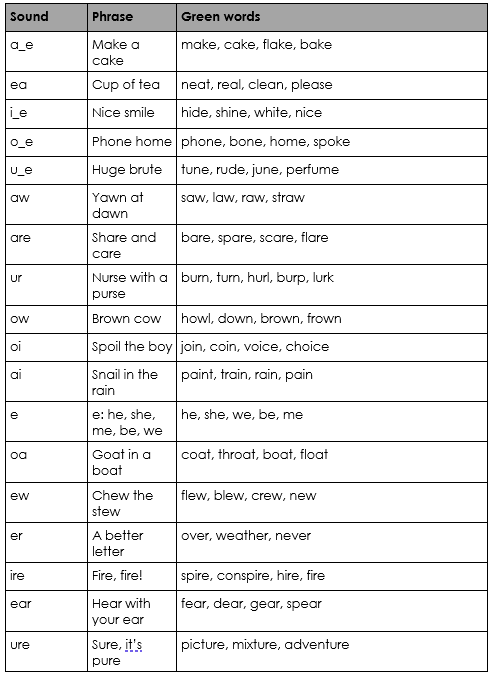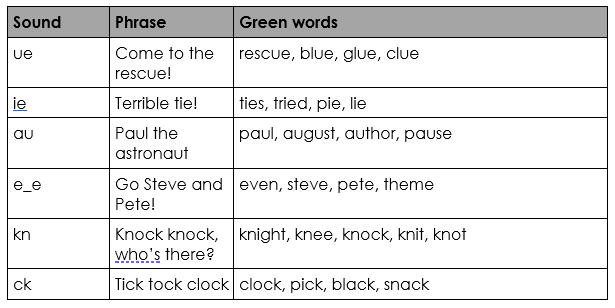Phonics
'Wherever I am, if I've got a book with me,
I have a place I can go and be happy'
J. K. Rowling

Intent
At Wimborne First School and Nursery, our aim is to ensure all children leave our school being confident readers and writers, who have a love for exploring literature. Through daily, systematic and consistent high quality phonics teaching, children learn to segment words to support their spelling and blend sounds to read words. Our chosen synthetic phonics programme; 'Read, Write, Inc' produced by Ruth Miskin, ensures children develop a strong phonic awareness and that they master effective blending and decoding skills. The programme builds on their growing knowledge of the alphabetic code, so they can read accurately, fluently and with understanding to spell. These fundamental skills not only hold the keys to the rest of the curriculum but also have a huge impact on children’s self-esteem and future life chances. We believe that phonics provides the foundations of learning to make the development into fluent readers and writers and more importantly, to become independent life-long learners.
Implementation
Direct teaching underpins Read Write Inc. It is the quickest route to ensuring all children learn to read and write. Every day, children learn new sounds, and review previous sounds and words. They apply what they’ve been taught by reading words containing the sounds they know in matched decodable books and other texts, and write these sounds in individual words and, later, sentences. Children learn the routines and behaviours necessary for each activity, and practise these until they use them automatically.
We start by teaching phonics in Nursery during the half term before the children start school. Then in Reception, we recap previously taught sounds and begin teaching Set 1 sounds. Children can start blending sounds into words as soon as they know a small group of letters. Once the children have been taught the first 5 sounds, they are then taught assisted blending using the sounds that they know. During lessons, children are taught to hear sounds and blend them together in sequence to make a word. We start with blending oral sounds, then progress to reading the letters and blending them together to read the word.
In Read, Write, Inc. the individual sounds are called ‘speed sounds’ – because we want children to read them effortlessly. Set 1 sounds are the single letter sounds as well as five Set 1 special friend sounds (two letters that make one sound – digraphs). There are 12 Set 2 ‘speed sounds’ that are made up of two or three letters which represent just one sound, e.g. 'ay' as in play, 'ee' as in see and 'igh as in high.
Each sound has a list of green words linked to it, so that the children have the opportunity to sound out and blend words containing the new sound they have been taught, for example, p-l-ay = play. Green words are decodable words that children can use their ‘Fred Talk’ to sound out and blend. They feature the sound that the children have been learning that day. When learning Set 3 speed sounds the children will be taught alternative sounds/graphemes, e.g. 'ee' as in see and 'ea' as in tea.
Five key principles underpin the teaching in all Read, Write, Inc. sessions:
Purpose – know the purpose of every activity and share it with the children, so they know the one thing they should be thinking about.
Participation – ensure every child participates throughout the lesson. Partnership work is fundamental to learning.
Praise – ensure children are praised for effort and learning, not ability.
Pace – teach at an effective pace and devote every moment to teaching and learning.
Passion – be passionate about teaching so children can be engaged emotionally.
Fred Talk (Fred the Frog)
We use pure sounds (‘m’ not’ muh’,’s’ not ‘suh’, etc.) so that your child will be able to blend the sounds into words.
At school we use a puppet called Fred who is an expert on sounding out words! we call it, ‘Fred Talk’. E.g. m-o-p, c-a-t, m-a-n, sh-o-p, b-l-a-ck.
These are the sounds we use to speak in English. Children initially begin using pictures for each sound, this will help children recognise the sound and then form the shape of the sound.
The following video is an example of blending sounds with Fred. https://www.youtube.com/watch?v=dEzfpod5w_Q
Set 1 sounds are taught in an order together with rhymes to help children form the letters correctly and instantly recognise sounds ready for blending. At this stage we do not use the letter names.
Please click on the document at the bottom of this page for a copy of the letter formation rhymes for the Set 1 sounds.
Set 1 ‘Special Friend’ Sounds
Set 2 Sounds
Set 3 Sounds
Additional Sounds
Red and Green Words
Within all sessions/books children will be exposed to red and green words to learn to help them to become speedy readers. Green words are linked to the sounds they have been learning and are easily decodable. Red words are words that are not easily decodable and challenge words to extend children’s vocabulary. These are introduced in a progression that matches the order they are introduced in the different colour books. The table below demonstrates this. Children learn that red words are words that require us to stop and think, we can’t use our sounds to blend them and have to work hard to remember the tricky bits about them so we can remember to read and spell them accurately. Please click on the document at the bottom of this page for a copy of Red word progression.
Assessment
Children work in a progress group for 40 minutes each day. Reception children build up to this throughout the year. The children are assessed against their phonic knowledge before they start the programme and then every half term. If required, some children are assessed throughout the term. Regrouping children maximises their progress and allows teachers to provide extra practice. Following the assessment, we will then provide extra support and intervention work for those who need it.
Help At Home
We highly encourage and value family engagement with reading at home, as we believe it can build self-esteem, vocabulary, feed imagination and encourage a love of reading.
We would love to see at least three entries of home reading each week in your reading record. We value open communication with our families and invite home reading comments from you in your child’s reading record. If you would like any support on this at any time, just speak to your class teacher.
Your child will start to bring books home when they are confident readers, relating to their reading stage. You will find they will bring home a phonics based book, this will aid application, speed and fluency- developing speedy reading!
Children in Reception who have learnt the Set 1 speed sounds but are not yet blending fluently will bring home 'My Set 1 speed sound book' and a 'love to read' library book for you to read with them.
Once children can blend fluently and know the Set 1 sounds they will bring home Lilac sound blending books. They will then progress onto Ditty sheets or a red Ditty book. When the children are ready they will move onto the next stage of RWI storybooks. These books are carefully selected to link to the sounds and words taught in your child's phonics lessons throughout that week in school. Please click on the document at the bottom of this page for a copy of the letter formation rhymes for the Set 1 sounds.
An active role in supporting your child's reading can be taken through:
- Ensuring your child brings their learn to read book and reading record into school every day.
- Using the websites we send you in the weekly letters, sharing what sound/sounds your child is learning.
- Hearing your child read at least three times a week, praising success and supporting their efforts.
- Not worrying if your child's reading book seems too easy! They should be able to read their learn to read books speedily and with expression, because they will contain words and phrases already taught in lessons that week.
- Using useful websites that link to our school's reading programme, such as: Parents - Ruth Miskin Phonics Training
Year 1 National Phonics Screening Check
The National Phonics Screening Test was introduced in 2012 to all Year 1 pupils. It is a short, statutory assessment to confirm whether individual pupils have learnt phonic decoding to an appropriate standard. The test is usually completed in June in Year 1.
How is the check structured?
It comprises of a list of 40 words that the children are required to read. The list is a combination of both real and nonsense words which rely purely on using phonics to decode. The nonsense words are words that have been made up and will be shown with a picture of an imaginary creature to help them. During the assessment, the children will be sitting with a teacher one to one reading the words. It should take between 5-10 minutes. The children will largely be unaware of it being a test as they have already participated in some practice ones.
What are nonsense words?- 'What a load of nonsense!'
As well as learning to read and blend real words children will have plenty of opportunities to apply their sound recognition skills on reading ‘Nonsense words’. These words will also feature heavily in the Year One Phonics Screening check in the summer term. These words provide endless opportunities for children to apply and practice their thinking in a range of different contexts.
What happens if a child struggles with the screening check?
All children are individuals and develop at different rates. The screening check ensures that teachers understand which children need extra help with phonic decoding. Following the data from the test, we will then provide extra support and intervention work for the children who did not pass. If your child does not pass the phonics screening in Year One, they will retake the test in Year Two. The link below can provide more information and has previous paper links so you can have a look together if you wish.
Phonics screening check: Phonics screening check: 2019 materials - GOV.UK (www.gov.uk)
Please click here to view our Phonics Policy
Our Statutory Phonics Screening Results 2023
|
Year 1 |
90% |
|
National |
79% |
|
Year 2 |
98% |
|
National |
89% |

| Name | |
|---|---|
| 2024 Powerpoint for RWI talk to parents.ppt | Download |








